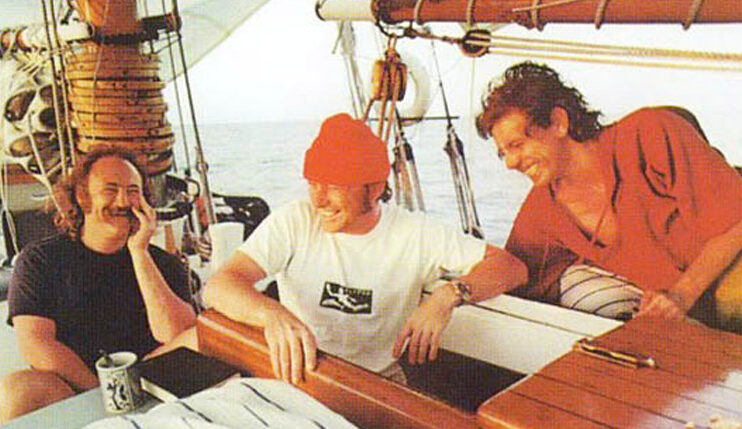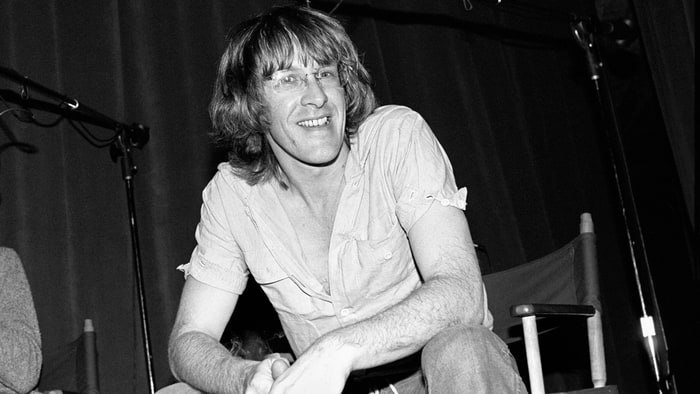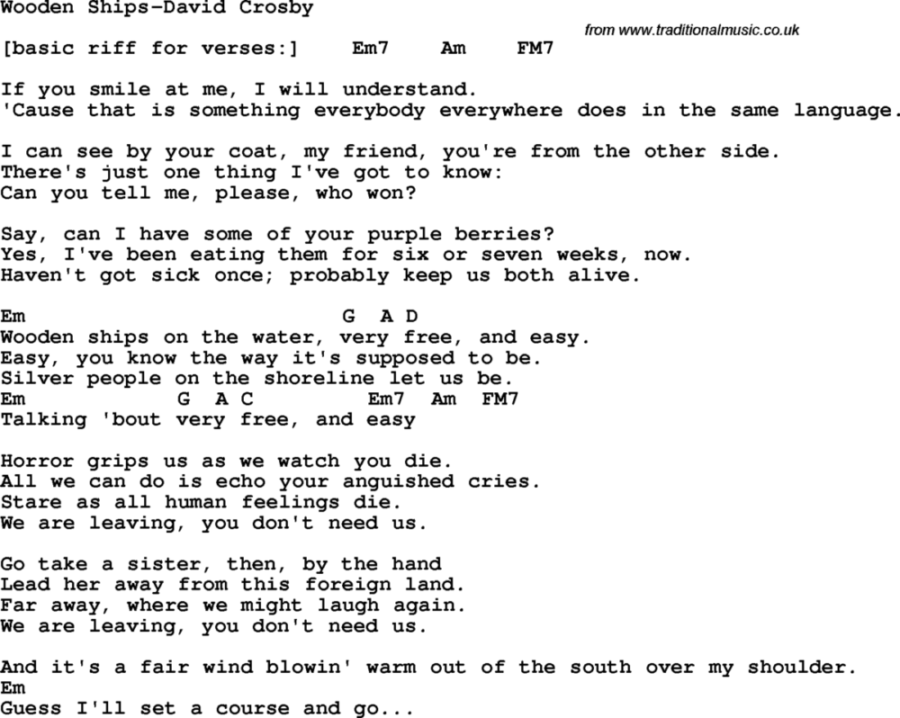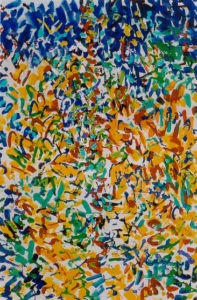The Story of ‘Wooden Ships,’ the 1969 Song Composed Aboard David Crosby’s Boat

David Crosby, Stephen Stills, and Graham Nash aboard the Mayan. The photo became the cover shot for the album CSN. Source: Jacquo Lifestyle Magazine
The beloved song, covered by Crosby, Stills & Nash, and the Jefferson Airplane, is actually about survivors of a nuclear war.
The story of the song, “Wooden Ships” begins in Ft. Lauderdale, Florida, sometime in 1968 when David Crosby, Stephen Stills, and Paul Kantner were relaxing aboard Crosby’s schooner, the Mayan. Crosby had recorded a demo of a melody without lyrics in March 1968, which he played for Kantner and Stills. The three went to work. David Crosby remembers:
I’d been kicked out of the Byrds, and I found a boat and bought it in Ft. Lauderdale…Stephen…and Paul Kantner came down to see me…I had this set of [chord] changes that I’d been playing for a long time, that I really, really loved. We were sitting around the main cabin of the boat…and we started playing that set of changes and we wrote that song together…It was a very organic process.
Paul Kantner, a singer and rhythm guitarist for the Jefferson Airplane, sheds light on the division of labor for writing “Wooden Ships:”
David would take us on his boat here and there…I knew how fond David was of the ocean. It was his song, really to start with. So I just put “Wooden ships on the water, very free and easy,” which charmed David to no end. Most of [the song] was my lyric…and David’s music. Stephen Stills wrote one verse, the nasty verse about watching you die, which is sort of fitting for Stephen.
David Crosby credited Stephen Stills with arranging portions of the song.
The Meaning of “Wooden Ships”
Reading the above lyrics, “Wooden Ships” is obviously not about a weekend gallivant, despite the song’s origin.
Science fiction, the Vietnam War, and the nuclear arms race influenced the three songwriters. “Wooden Ships” depicts an escape by sea from a world contaminated by nuclear war (“Who won?”). The “silver people on the shoreline” are, according to David Crosby, “guys in radiation suits.” The “purple berries” are iodine pills to protect the survivors from radiation. The ships are wooden because metal would become radioactive (“no glowing metal on our ship of wood”).
Despite its grim tableau, “Wooden Ships” was promoted as a call for “peace, unity, and shared humanity,” though the lyrical cues are wanting.
Double Release
“Wooden Ships” was recorded by the two bands the songwriters maintained membership: Crosby, Stills & Nash recorded theirs on February 20, 1969, for their debut album; Kantner’s Jefferson Airplane followed suit on April 14 & 22, 1969, for the album, Volunteers.
Paul Kantner initially didn’t get songwriting credit because the Jefferson Airplane were in a dispute with their manager over song rights, and the songwriters wisely severed “Wooden Ships” from the battlefield. Crosby: “Of course we evened things up with him with a whole mess of cash when the record went huge.”
Here is Crosby, Stills & Nash performing “Wooden Ships” live in Houston, Texas, in 1977, a revealing look at the band members’ guitar chops, published by RustedTelevisione via YouTube:
Woodstock
Both bands performed “Wooden Ships” at Woodstock. Crosby, Stills & Nash performed theirs at night so there’s no serviceable video (their studio version was included in the original Woodstock soundtrack). The Jefferson Airplane mustered onstage at 8:00 AM on Sunday, the last day of the festival, and delivered a stunning 21-minute extended version of the song, unreleased until the 2009 Woodstock Experience box set.
And so, instead of a Woodstock performance, here is a clip of the Jefferson Airplane’s studio version, with Woodstock imagery interspersed for effect, published by Eduardo Franco Ocnarfeara via YouTube:
Aftermath
Tart-tongued Neil Young used “Wooden Ships” as a prop for his 1986 reprimand of the counterculture in the song, “Hippie Dream:”
But the wooden ships were just a hippie dream
Capsized in excess, if you know what I mean.
Jackson Browne famously asked David Crosby about the fate of the people left behind on the shore. Crosby coarsely responded, “Well, fuck ’em.” Crosby reportedly apologized (not his first time), but not before Browne wrote the 1973 song, “For Everyman,” his answer to the escapist utopianism that “Wooden Ships” supposedly evoked.
Coda
While David Crosby insisted that the song is “science fiction,” “Wooden Ships” has gathered an aura around the spirit of the ’60s, when the younger generation struggling with Vietnam and the Cold War could seek refuge in an idealized peaceful world. If it were only true.
I’m certain the aura has worn off. Nuclear war was, is, and will always be an existential threat, and there’s just no escaping that.
Sometimes science fiction is…science fiction. That’s what the songwriters envisioned, and they achieved it masterfully.
Editor’s note: “Wooden Ships” takes its rightful place among a select few rock songs that are featured in this blog. They are Bohemian Rhapsody, House of the Rising Sun, All I Wanna Do, John Barleycorn Must Die!, Papa Was a Rollin’ Stone, Lola, and Telstar. Just click and read! –AG


















































































































